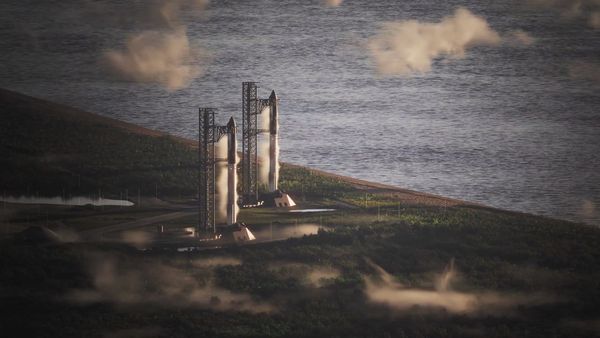The launch of the “game-changing” £3bn new fleet of trains on the Piccadilly line will be delayed by up to a year in a massive blow to Tube passengers, The Standard can reveal.
The eagerly anticipated fleet of 94 new trains will be the first “deep level” Tube trains to be air conditioned, with 10 per cent more capacity, wider doors for quicker boarding, walk through carriages and CCTV.
They will replace an “age expired” fleet of Piccadilly line trains that dates to 1973, initially enabling peak-hour frequencies to be increased from 24 to 27 trains an hour – and eventually 36 trains an hour, equivalent to the Victoria line.
Transport for London had promised that the first new Piccadilly line train would enter passenger service by the end of 2025.
But after The Standard learned of the delays this week, TfL decided to publicly confirm on Friday that the new trains are now not expected until the “second half of 2026”.
The delay has been caused by unexpected difficulties in introducing the first new train onto challenging “real life” conditions on London Underground infrastructure, compared with the test track, on which the train is understood to have performed well.
It means many passengers face an additional summer of soaring temperatures underground, despite promises of air-cooled journeys.
The first batch of the new trains are being built by Siemens in Vienna, Austria. The bulk of the order will be assembled at Siemens’ new factory in Goole, east Yorkshire.
One source said the electrical equipment underneath the new trains was “not in the right alignment”, requiring Siemens to fix the problem.
TfL confirmed on Friday that “the start of a rigorous programme of testing the interactions with the infrastructure and systems is delayed until the summer”.
Further part or full closures of the Piccadilly line at weekends, to prepare the stations for the new nine-carriage trains, will continue over the coming months.
Stuart Harvey, TfL's chief capital officer, who is in charge of the introduction of the new trains, said: “It will obviously be disappointing for customers that they will have to wait a bit longer for the new trains, and I regret that.
“But I would like to assure Londoners and visitors to our city that we are working extremely closely with Siemens to ensure that the new trains can be introduced as soon as possible in the second half of next year.”
A new “window” for the first new train to enter service has been set for July to December 2026. “Siemens and TfL are absolutely focused on trying to achieve the July end of the window,” Mr Harvey said. “But it’s too early to say we can get that yet.”
The hope is that all 94 trains will be in service “18 to 20 months” after the first one starts running – meaning sometime between the end of 2027 or “early 2028”.
TfL is also facing a lengthy delay in introducing new DLR trains.
The Elizabeth line opened more than three years late, though that appears to have been largely forgotten by the hundreds of thousands of passengers who have made it the UK’s busiest rail line since trains finally started running in May 2022.
Speaking to The Standard, Mr Harvey, who recently made another visit to the Siemens factory in Vienna, insisted the new rolling stock would be a “fantastic new train for London”.
He said: “It’s a brilliant new train. It’s really stretched the engineering expertise of Siemens and TfL.”
He was reluctant to outline the technical issues behind the delay but insisted: “There is no fault on the train.”
Mr Harvey said: “The train has done 15,000km on the test track. It does what it says on the tin. But the test track is a test track. It doesn’t exactly mimic what the train will experience in London.”

He added: “There is no issue at all with the signalling. Both Siemens and TfL have systems we are providing to make sure the train can operate – that it opens the doors on the right side; that it stops in the right place.
“The train is working perfectly fine, as designed. But there is some slight redesign required to make sure we get things in the right place.”
He said TfL and Siemens were “working collaboratively” to resolve the problems and there was “no suggestion” of legal action, though he admitted to “tough conversations” having taken place.
Siemens sources told The Standard that there had been “tense negotiations” with TfL, with the vast sums of public money at stake, and the reputation of both organisations, being raised.
Siemens said it was having to contend with the challenges of introducing a state-of-the-art train onto well-used and, in some cases, dated infrastructure.
Sources said equipment was having to be fitted at each station to enable the train to know where to stop.
The first new train, which arrived in London last October, was spotted overnight on Underground tracks in west London in March but has yet to be properly tested. TfL says testing will get underway this summer.
Mr Harvey said the new trains would have a “transformative effect” in the capital.
The Piccadilly line connects King’s Cross and the West End with Heathrow airport and beyond and is used for more than 10 per cent of all daily Tube journeys – about 160m trips a year.
Mr Harvey said: “This is an ambitious project with new 21st century trains providing engineering challenges in both building and introduction into service on a 20th century railway and it is critical that we ensure that safety comes first and that the trains are in top condition when they begin to service London.”
He added: “We don’t want to start testing until we are happy this train is going to go through its paces.”
Only one of the new trains, built in Vienna, has arrived in London.
A second Vienna-built train is said to be “ready to come”, with the first UK-built train – assembled at Siemens’ new factory in Goole, east Yorkshire, due in September, about six months later than initially expected.
Issues have also emerged with the driver’s seat. “We are absolutely making sure the train driver’s seat is fit for purpose, including from an ergonomic perspective,” Mr Harvey said. “This has been challenging.”
Asked what the problems meant for Siemens’ hope of securing an order for a new fleet of Bakerloo line trains, Mr Harvey said TfL remained keen to have a “standardised” train design on the Piccadilly, Bakerloo, Central and Waterloo and City lines.
“Nothing we are seeing has knocked our confidence at all,” he said.
The new trains have double doors throughout to make it easier to get on and off, especially during the rush hour, and on-board CCTV to improve safety.
They are more spacious, with more headroom – and four of their nine carriages will effectively “float” on top of the rails as they will not have wheels, or train “bogies”, underneath.
The 86 trains on the Piccadilly line have been in service since 1975.
Work has been carried out at Tube stations to “shave” the platform edges – as the new trains have different turning geometry to the existing fleet – and to install platform humps or manual boarding ramps to improve accessibility.
Of the 94 new trains, 79 will be assembled in Goole. The first Goole train was originally due to arrive in London in the first three months of 2025.
The Standard was invited to Siemens’ test track in Wildenrath in north-west Germany in November 2023 to see the new train.
The new trains will have a notional capacity of 1,042 passengers - about 10 per cent more than the 1973 stock.







